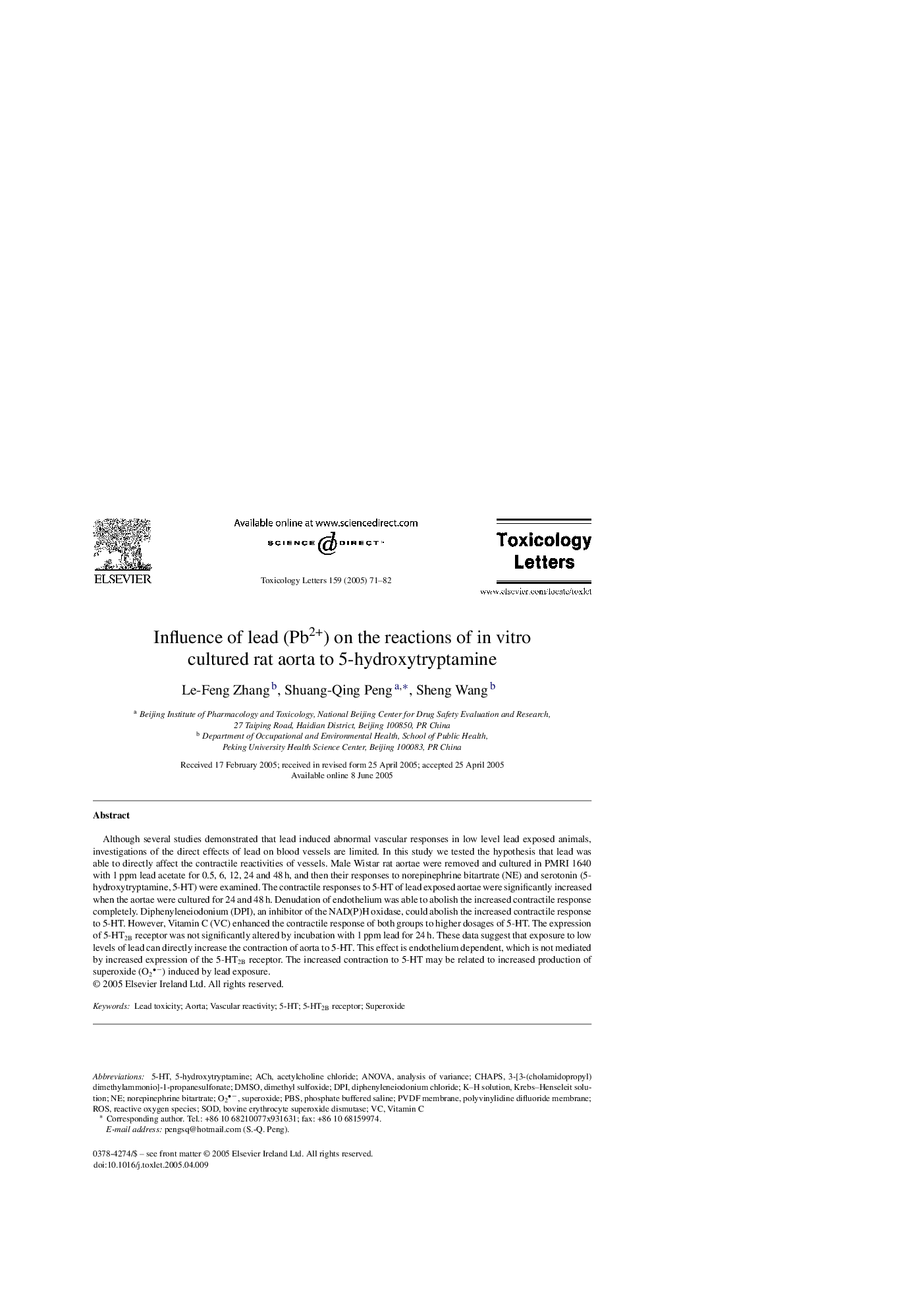| Article ID | Journal | Published Year | Pages | File Type |
|---|---|---|---|---|
| 9037426 | Toxicology Letters | 2005 | 12 Pages |
Abstract
Although several studies demonstrated that lead induced abnormal vascular responses in low level lead exposed animals, investigations of the direct effects of lead on blood vessels are limited. In this study we tested the hypothesis that lead was able to directly affect the contractile reactivities of vessels. Male Wistar rat aortae were removed and cultured in PMRI 1640 with 1Â ppm lead acetate for 0.5, 6, 12, 24 and 48Â h, and then their responses to norepinephrine bitartrate (NE) and serotonin (5-hydroxytryptamine, 5-HT) were examined. The contractile responses to 5-HT of lead exposed aortae were significantly increased when the aortae were cultured for 24 and 48Â h. Denudation of endothelium was able to abolish the increased contractile response completely. Diphenyleneiodonium (DPI), an inhibitor of the NAD(P)H oxidase, could abolish the increased contractile response to 5-HT. However, Vitamin C (VC) enhanced the contractile response of both groups to higher dosages of 5-HT. The expression of 5-HT2B receptor was not significantly altered by incubation with 1Â ppm lead for 24Â h. These data suggest that exposure to low levels of lead can directly increase the contraction of aorta to 5-HT. This effect is endothelium dependent, which is not mediated by increased expression of the 5-HT2B receptor. The increased contraction to 5-HT may be related to increased production of superoxide (O2â) induced by lead exposure.
Keywords
Related Topics
Life Sciences
Environmental Science
Health, Toxicology and Mutagenesis
Authors
Le-Feng Zhang, Shuang-Qing Peng, Sheng Wang,
